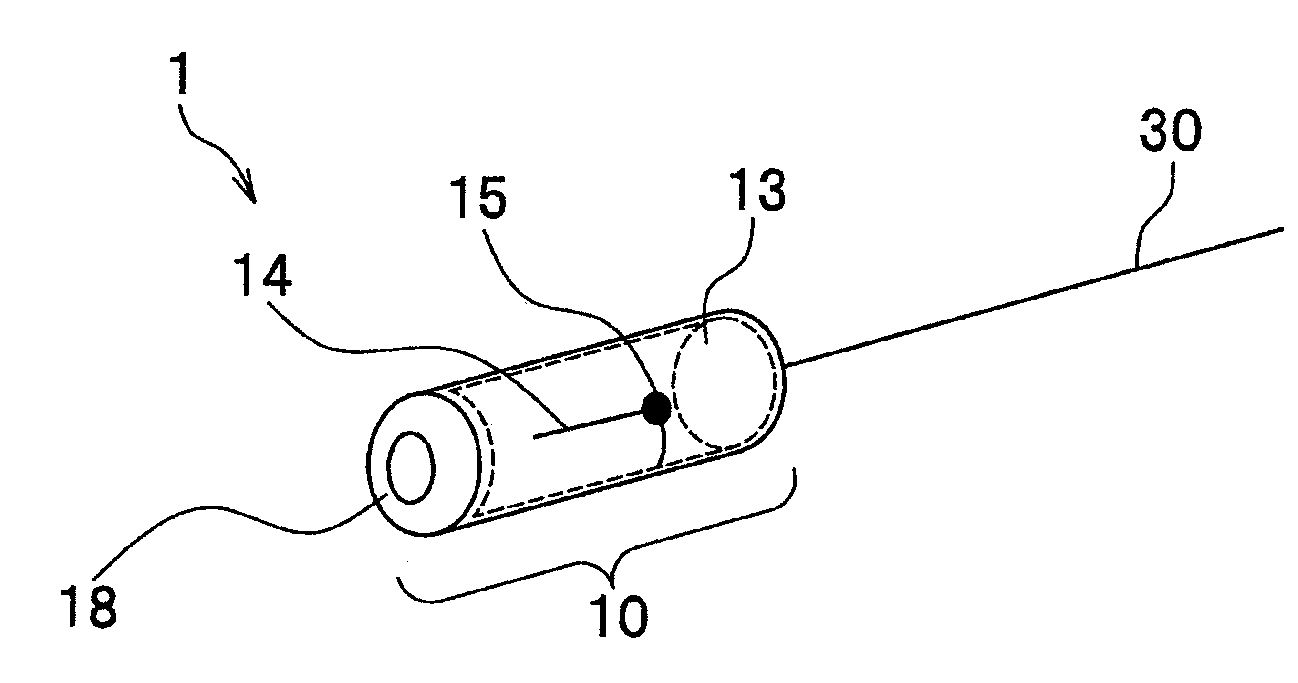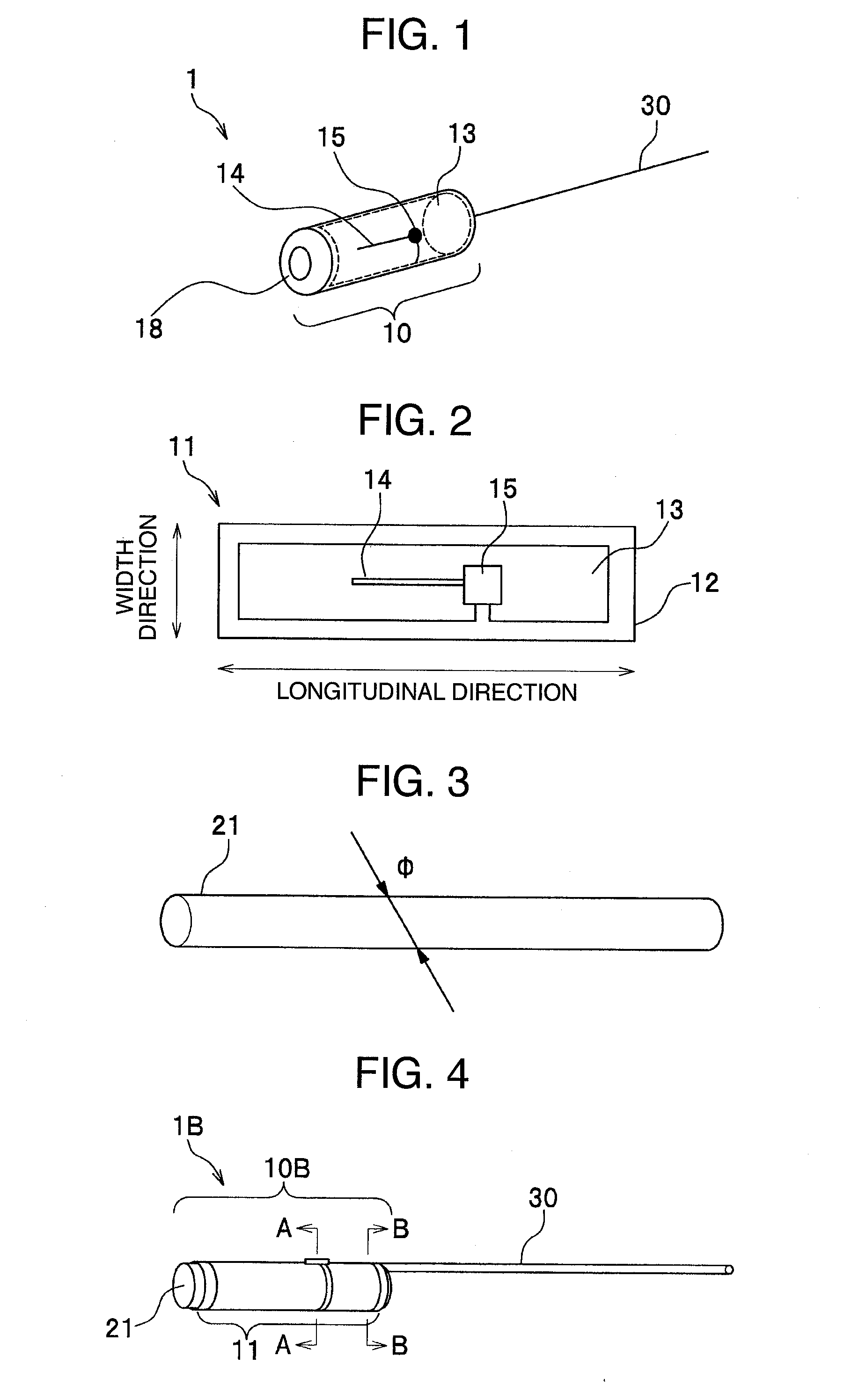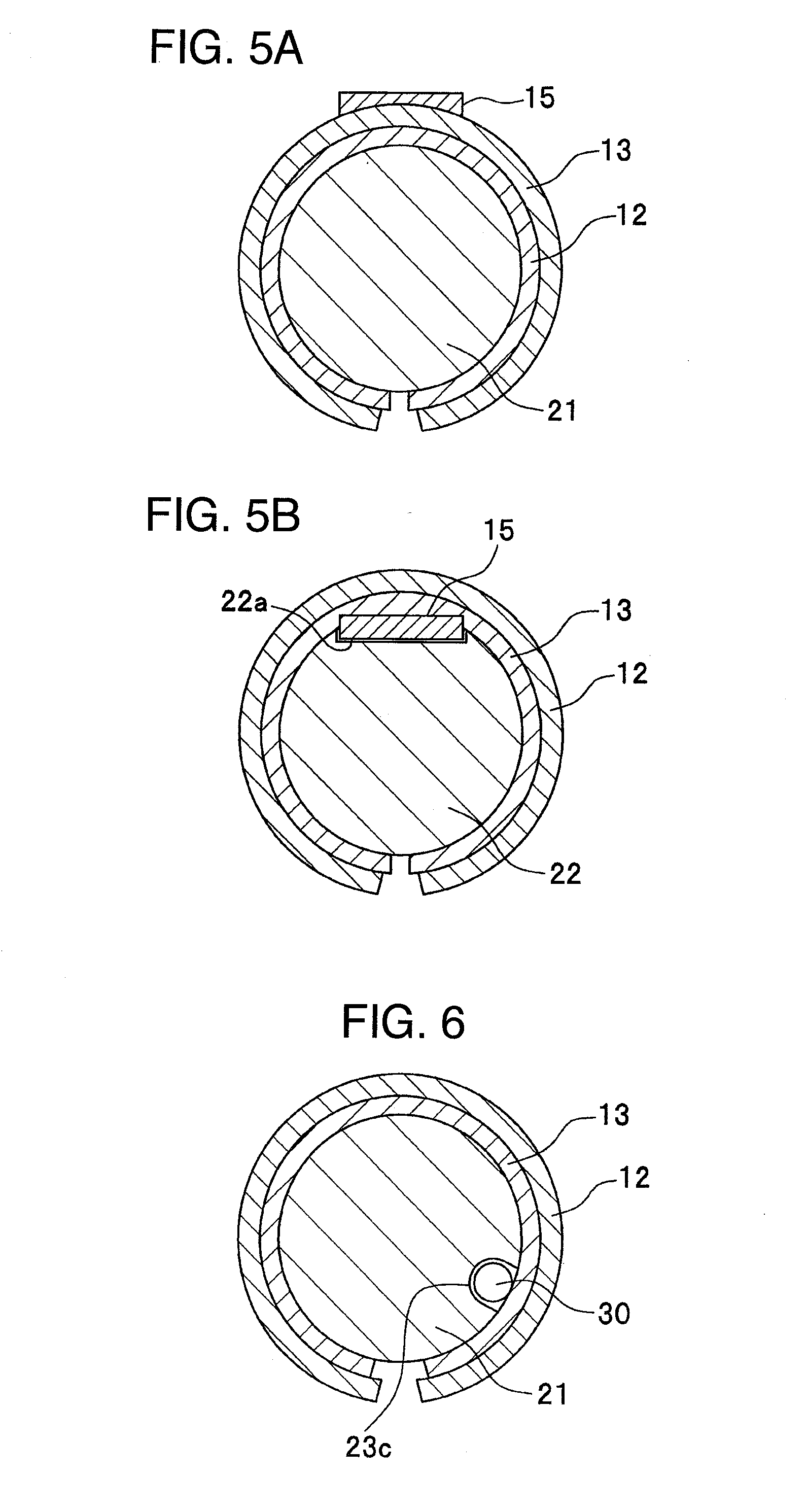Biological implantation RFID tags and insertion jig therefor
a technology of biological implantation and rfid, which is applied in the field of biological implantation rfid (radio frequency identification) tags, can solve the problems of difficult to reduce the size and weight of biological elements, reducing their lifetime, and affecting the communication performance of the device, so as to achieve the effect of improving communication performan
- Summary
- Abstract
- Description
- Claims
- Application Information
AI Technical Summary
Benefits of technology
Problems solved by technology
Method used
Image
Examples
first embodiment
[0035]FIG. 1 is a diagram showing the structure of a biological implantation RFID tag 1 in accordance with a first embodiment of the present invention.
[0036]The biological implantation RFID tag 1 has an inlet portion 10 functioning as a biological implantation RFID tag and an auxiliary antenna 30 attached to the inlet portion 10. As described below, the entire inlet portion 10 of the biological implantation RFID tag 1 is subcutaneously implanted at a subcutaneous site (described below) of a small animal with all or a part of, preferably, most part of the auxiliary antenna 30 projected toward a free space outside the living body.
[0037]The biological implantation RFID tag 1 is subcutaneously implanted in a mouse or the like and is thus very small. However, the biological implantation RFID tag 1 can be implanted in other small or medium-size animals without posing any problem. The size of the biological implantation RFID tag 1 is such that its length is equal to at most 10% of the body...
second embodiment
[0082]FIG. 9 is a diagram showing the assembly of a biological implantation RFID tag 2 in accordance with a second embodiment of the present invention.
[0083]In the biological implantation RFID tag 2, a metal lead frame 60 provides the functions of both the main antenna 13 (see FIG. 2) and support 21 (see FIG. 3) of the biological implantation RFID tag 1 in accordance with the first embodiment.
[0084]As shown in FIG. 9A, the IC chip 15 is of a single-side electrode type and has two signal I / O electrodes 15a and 15b located on the same surface thereof.
[0085]As shown in FIG. 9B, the lead frame 60 has a slit 64 formed along the longitudinal direction, a main antenna 62 formed from one end to the center thereof, and a U-shaped stub 63 for impedance matching formed at the other end thereof. The main antenna 62 includes a caulking portion 60d (see FIG. 10) for connection with the auxiliary antenna 30 and connecting portions 60a and 60b for connection with the two signal I / O electrodes 15a a...
third embodiment
[0092]FIG. 11 is a diagram showing the assembly and configuration of a biological implantation RFID tag 3 in accordance with a third embodiment of the present invention.
[0093]The biological implantation RFID tag 3 in accordance with the third embodiment comprises an IC chip 16 of a double electrode type instead of comprising the IC chip 15 of a single electrode type in the biological implantation RFID tag 2 in accordance with the second embodiment. Further, the biological implantation RFID tag 3 in accordance with the third embodiment uses a lead frame 70 to provide the functions of both the main antenna 13 (see FIG. 2) and support 21 (see FIG. 3) of the biological implantation RFID tag 1 in accordance with the first embodiment, in almost the same manner as that in the second embodiment.
[0094]FIG. 11A is a perspective view of the IC chip 16. FIG. 11B is a side view of the IC chip 16.
[0095]The IC chip 16 is of a double electrode type and has a signal I / O electrode 16a formed on one s...
PUM
 Login to View More
Login to View More Abstract
Description
Claims
Application Information
 Login to View More
Login to View More - R&D
- Intellectual Property
- Life Sciences
- Materials
- Tech Scout
- Unparalleled Data Quality
- Higher Quality Content
- 60% Fewer Hallucinations
Browse by: Latest US Patents, China's latest patents, Technical Efficacy Thesaurus, Application Domain, Technology Topic, Popular Technical Reports.
© 2025 PatSnap. All rights reserved.Legal|Privacy policy|Modern Slavery Act Transparency Statement|Sitemap|About US| Contact US: help@patsnap.com



